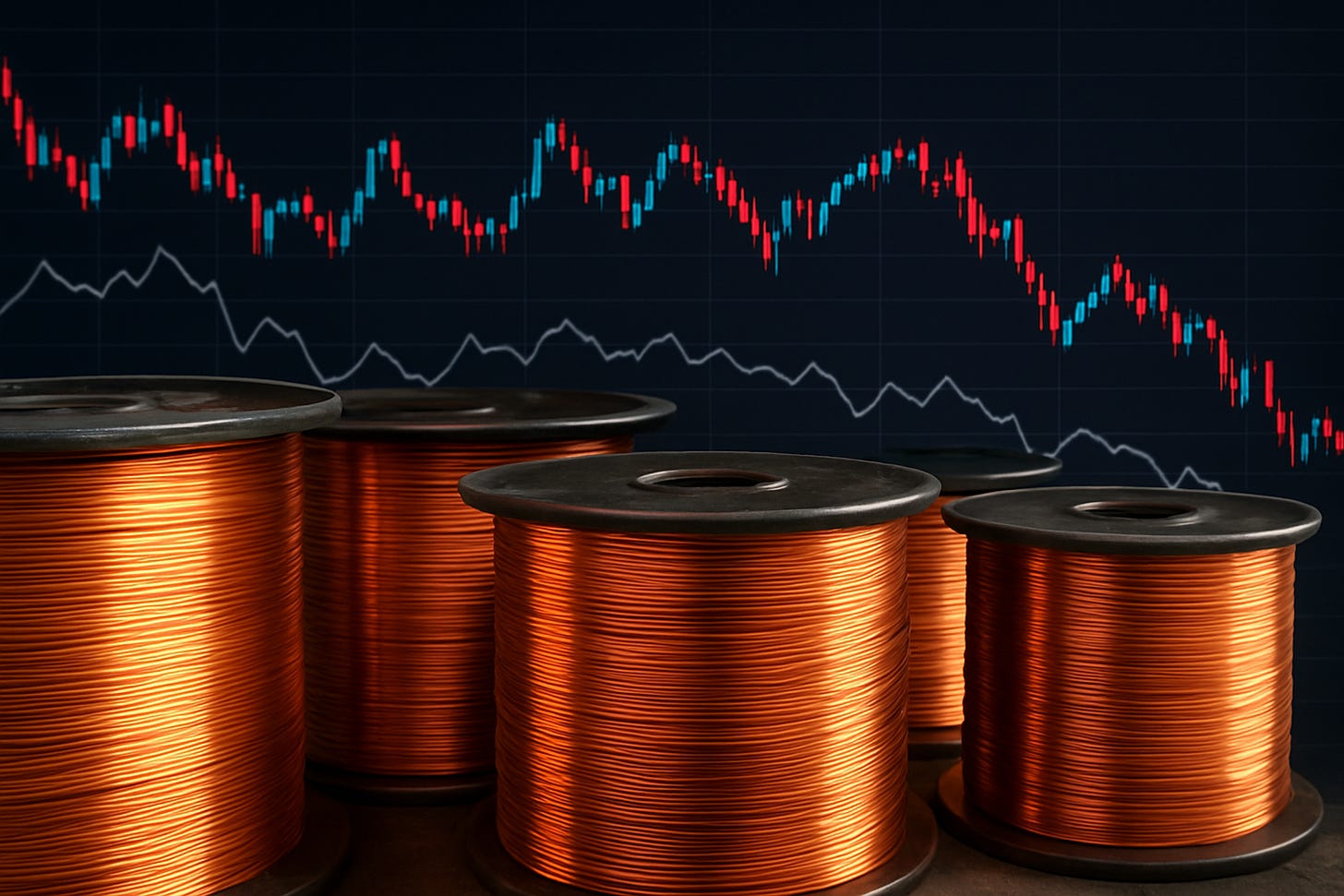What Could Go Wrong?
A 50% Tariff on Copper, and the High Cost of Performing Strength
On July 9th, Donald Trump announced a 50% tariff on imported copper, effective August 1, citing national security concerns and the need to revive the U.S. copper industry. The announcement was heavy on hyperbole—“dominant copper industry,” “sleepy leaders,” and, of course, “OUR GOLDEN AGE”—but light on reality.
So… what could go wrong?
Just about everything.
Copper is Everywhere
Copper isn’t some obscure material. It’s the wiring of our civilization. It runs through:
Homes and infrastructure
Cars (especially EVs)
Solar panels and wind turbines
Ammunition, semiconductors, radar systems
Data centers, batteries, and national defense systems
When you raise the price of copper, you raise the price of everything it touches. And that means higher costs for builders, buyers, manufacturers—and you.
Tariffs Are Just Taxes in Disguise
We still need copper. A lot of it. And unless Trump has secretly unlocked a time machine to jumpstart domestic mining capacity, we’ll still be importing most of it—from Chile, Peru, and Canada.
A 50% tariff doesn’t make us self-sufficient.
It just makes everything more expensive.
Builders pay more
Consumers pay more
The Department of Defense (yes, the one we’re supposedly “protecting”) pays more
Inflation creeps in through the copper wiring
This is Reaganomics with a red hat and no pants.
We Can’t Just Mine Our Way Out of This
Domestic copper mining isn’t as simple as flipping a switch. It takes years—sometimes decades—to bring new sites online. There are environmental regulations, permitting battles, labor shortages, and cost concerns.
And let’s be honest:
There is no coherent plan to expand domestic production.
There’s just… yelling.
National Security Theater
Trump frames this as a national security issue. But copper is already critical to defense:
Hypersonic weapons
Missile defense
Surveillance systems
Military infrastructure
Driving up its cost, without securing the supply chain, weakens our readiness. It doesn’t bolster it. This isn’t defense policy. It’s a stage production of “Patriotism: The Musical.”
Global Retaliation Incoming
Chile and Peru are watching. So is Canada.
You think they’re going to shrug and thank us for the 50% tariff?
We should expect:
Counter-tariffs
Supply chain slowdowns
Strategic partnerships that exclude the U.S.
And when those countries start doing more business with China, we’ll be left paying extra for a metal we used to get cheaper, while losing geopolitical influence in the process.
This Isn’t Policy. It’s Performance.
There’s no green transition plan.
No investment in domestic refinement.
No vision for the future of energy, tech, or trade.
Just another caps-locked decree, loaded with nostalgic nationalism and grievance politics.
And while everyone’s staring at the circus, the cost of living goes up, critical industries destabilize, and voters wonder why “Made in America” just got even further out of reach.
Case Study: The 2018 Steel & Aluminum Tariffs
In 2018, Trump used the same justification—“national security” under Section 232—to impose:
25% tariffs on steel
10% tariffs on aluminum
He claimed it would strengthen domestic industry and protect the U.S. military supply chain.
The Result?
Prices Skyrocketed
Steel prices jumped as much as 40% within months. Manufacturers who relied on steel, including auto makers, construction firms, and appliance companies, were hit hard.
The cost of making things in America went up. And that cost got passed on to consumers.
Jobs Were Lost, Not Gained
A report by Trade Partnership Worldwide found that while a few thousand jobs were added in steel production, 75,000 jobs were lost in steel-using industries.
“For every steel job saved, 16 were lost elsewhere.”1
Even the Federal Reserve confirmed it: the tariffs slowed U.S. manufacturing growth overall.
Trade War Fallout
China, Canada, Mexico, the EU retaliated with tariffs of their own. U.S. exports got hit hard, especially agriculture.
The result?
$28 billion in bailout payments to U.S. farmers.
Yes, we taxed consumers to start a trade war—then borrowed money to bail out the people it hurt.
The National Security Excuse Didn’t Hold
A Department of Defense memo admitted that military demand for steel and aluminum was less than 3% of total domestic production. There was never a true national security threat.
The Lesson?
Tariffs don’t guarantee economic strength.
They’re not surgical tools. They’re hammers.
And when you swing them recklessly, the damage tends to hit your own side first. What Could Go Wrong?
Higher prices on homes, vehicles, electronics, and infrastructure
Strained relationships with our biggest trade partners
Inflation spikes in vulnerable industries
Weakened military readiness
More performative policy from a man who thinks yelling is leading
This tariff won’t bring us prosperity.
It will bring us pain, quietly wired into the walls of our daily lives.
And when the bill comes due, it won’t be Trump who pays it.
It’ll be us.
*I’m not an economist. I’m not a policy analyst. I’m just a guy with a browser full of tabs, a head full of questions, and a deep discomfort with silence in the face of bad decisions. So I dig. I connect dots. I write. And I try to make sense of things before they spin completely off the rails.
According to a 2018 analysis by Trade Partnership Worldwide, tariffs on steel and aluminum led to an estimated 16 jobs lost in downstream industries for every one job gained in steel production.


